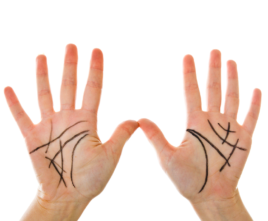
If the Head Line and Heart Line start together above the thumb (Figure 1), this is an indication of caution. If the Head and Heart Lines are separated with a gap above the thumb (Figure 2), this indicates that the person tends to be spontaneous...

If the Head Line and Heart Line start together above the thumb (Figure 1), this is an indication of caution. If the Head and Heart Lines are separated with a gap above the thumb (Figure 2), this indicates that the person tends to be spontaneous...
Local
Austin Economy
The Austin Economy will be stable, but will continue to be influenced more and more by the large Corporate presences that are arriving or expanding here. The tech, service and retail economies will be benefitted, but with increased housing costs, some members of the Austin community will be...

Before I became a full-time psychic and palmist, I trained as a medical speech-language pathologist, and spent several years working in hospital and psychiatric settings. In addition to learning speech therapy techniques, I studied neuropsychology, which includes the functions of the brain, all of which helped me understand what my stroke and head-injury...